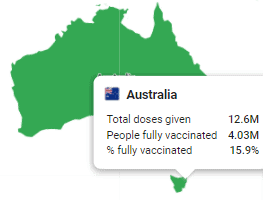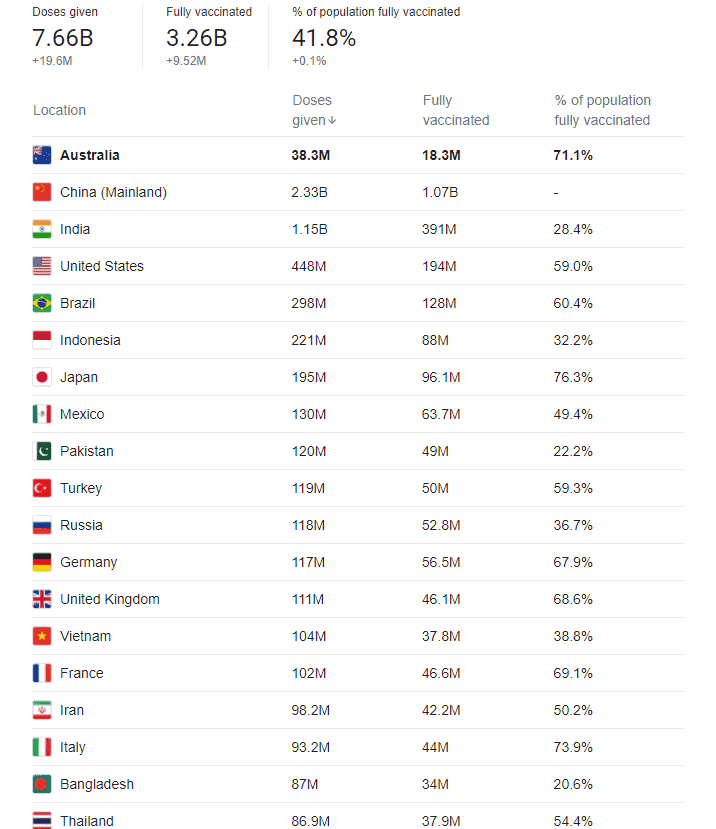October 2021 update on Australia’s border opening:
Australia’s international borders will open in November 2021, with the Federal Government announcing the ban on international travel will be lifted next month, allowing fully vaccinated Australians to return home. Fully vaccinated Australian citizens and permanent residents will be able to undergo quarantine at home for 7 days, while unvaccinated Australians will still be required to undergo quarantine at hotels or dedicated facilities for 14 days. The exact timing will vary from state to state, but New South Wales is expected to be the first to welcome back international travellers.
“When will Australia’s border open?” This is the question that many people including international students and workers have been asking us for the last 1 year. Covid19 has put us in an unprecedented situation where people cannot travel inbound or outbound Australia. Many plans and studies are disrupted. Many families and couples are forced to live apart. Many Australian companies are in labour shortage as international workers are not allowed to travel to the country. Australia’s borders are currently closed and travel to Australia is only available if you are exempt or you have been granted an individual exemption.
The Australian government has had a cautious approach towards how to deal with this wide-spread virus. It closed its border very soon and since March 2020 has placed very strict policies on travels domestically and internationally. With the current roll out of vaccination, the Australian Government has agreed on a 4-phase plan to gradually open its border to international travellers. The plan depends heavily on the percentage of vaccinated residents.
Australia has rolled out its vaccination plan and targeted to have 70% of its eligible population vaccinated by November 2021, and 80% in December 2021. If the plan can be timely implemented, we can expect Australian’s border to be open at the beginning of 2022 for international travelers who are fully vaccinated.
Phases triggered in a jurisdiction when the average vaccination rates across the nation have reached the threshold and that rate is achieved in a jurisdiction expressed as a percentage of the eligible population (16+), based on the scientific modelling conducted for the COVID-19 Risk Analysis and Response Task Force.
Related:
Phase A: Current Phase, Vaccinate, Prepare and Pilot
At this phase, Australia is continuing to strongly suppress the virus for the purpose of minimising community transmission. With this purpose, the following measures are implemented:
- Accelerate vaccination rates
- Close international borders to keep COVID-19 out
- Early, stringent and short lockdowns if outbreaks occur
- Minimize cases in the community through effective test, trace and isolate capabilities
- Implement the national vaccination plan to offer every Australian an opportunity to be vaccinated with the necessary doses of the relevant vaccine as soon as possible;
- Inbound passenger caps temporarily reduced
- Domestic travel restrictions directly proportionate to lockdown requirements
- Commonwealth to facilitate increased commercial flights to increase international repatriations to Darwin for quarantine at the Centre for National Resilience in Howard Springs;
- International Freight Assistance Mechanism extended
- Trial and pilot the introduction of alternative quarantine options, including home quarantine for returning vaccinated travelers;
- Expand commercial trials for limited entry of student and economic visa holders
- Recognize and adopt the existing digital Medicare Vaccination Certificate (automatically generated for every vaccination registered on AIR);
- Establish digital vaccination authentication at international borders;
- Prepare vaccine booster programme; and
- Undertake a further review of the national hotel quarantine network.
At this stage, international border remains closed.
Phase B: Vaccination Transition Phase – 70% of eligible population vaccinated
At this phase, Australia seeks to minimize serious illness, hospitalization and fatality as a result of COVID-19 with low level restrictions. Australia will:
- Maintain high vaccination rates, encouraging uptake through incentives and other measures
- Minimize cases in the community through ongoing low-level restrictions and effective track and trace
- Lockdowns less likely but possible
- International border caps and low-level international arrivals, with safe and proportionate quarantine to minimize the risk of COVID entering
- Ease restrictions on vaccinated residents
- Restore inbound passenger caps at previous levels for unvaccinated returning travelers and larger caps for vaccinated returning travelers;
- Allow capped entry of student and economic visa holders subject to quarantine arrangements and availability;
- Introduce new reduced quarantine arrangements for vaccinated residents; and
- Prepare/implement vaccine booster programme (depending on timing).
At this phase, a number of international students and workers might be allowed to travel to Australia, so long as they are fully vaccinated with certificates.
Phase C: Vaccination Consolidation Phase – 80% of eligible population vaccinated
At this phase, Australia seeks to minimize serious illness, hospitalization and fatality as a result of COVID-19 with baseline restrictions. Australia will:
- Maximize vaccination coverage
- Minimum ongoing baseline restrictions, adjusted to minimize cases without lockdowns
- Highly targeted lockdowns only
- Continue vaccine booster programme;
- Exempt vaccinated residents from all domestic restrictions;
- Abolish caps on returning vaccinated Australians;
- Allow increased capped entry of student, economic, and humanitarian visa holders;
- Lift all restrictions on outbound travel for vaccinated Australians; and
- Extend travel bubble for unrestricted travel to new candidate countries (Singapore, Pacific)
- Gradual reopening of inward and outward international travel with safe countries and proportionate quarantine and reduced requirements for fully vaccinated inbound travelers.
Phase D: Final, Post – Vaccination Phase – Free travels with limited restriction
Open international borders
- Quarantine for high-risk inbound travel
- Minimize cases in the community without ongoing restrictions or lockdowns
- Live with COVID-19: management consistent with influenza or other infectious diseases
- Boosters as necessary
- Allow uncapped inbound arrivals for all vaccinated persons, without quarantine; and
- Allow uncapped arrivals of non-vaccinated travelers subject to pre-flight and on arrival testing.
As the above plan depends mainly on the roll-out of the vaccine, it is important to understand where Australian’s vaccination program is at.
How does Australia’s vaccination efforts compare with other countries?
- Australia and Singapore Travel Bubble
- Section 48 Bar changes- 190, 491 494 visas
- Travel exemption applications now open for parents of Australians
- NSW Government Remove Quarantine Requirements for Fully Vaccinated International Arrivals
- Travel restrictions to Australia affecting international education
- Australia and New Zealand Travel Bubble
- Australia’s four-phase plan to open its border
- Digital Passenger Declaration- Australia’s digital vaccination passports
Consultations can be made via Video Google Meet, Skype, Phone.
If you would like a comprehensive consultation which includes assessing you for other temporary and permanent visa options (Skilled visas, Employer Sponsored, Partner, etc.) as well, we recommend our standard 45 minute to 1 hour consultation which can be scheduled here:
https://visaenvoy.as.me/video (45 min- $160)









National Innovation Visa – South Australia Criteria
Iran Visa Support – Australia
Immigration updates (Skilled, Employer and family visas) June 2025
National Innovation Visa – NSW Criteria
Registering as a Midwife in New Zealand (Non-AU/NZ Trained Applicants)